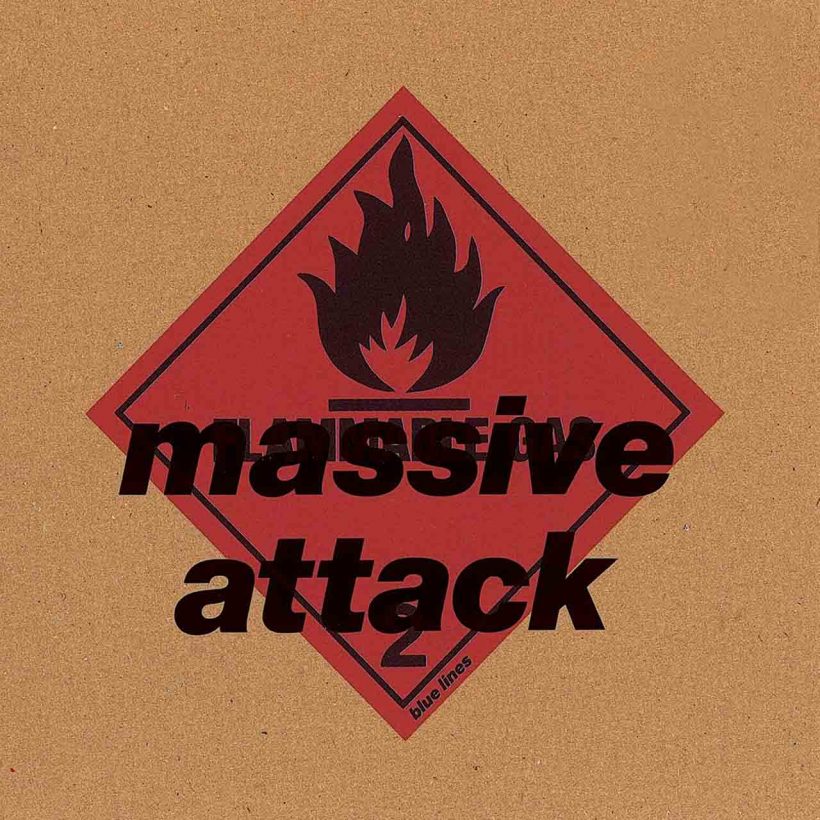‘Blue Lines’: Massive Attack’s Game-Changing Trip-Hop Masterpiece
The Bristol band’s debut still sounds unique today.

British dance music was in especially rude health at the turn of the 1990s. Benchmark releases including Soul II Soul’s Club Classics Vol. One, Neneh Cherry’s Raw Like Sushi and Young Disciples’ Road To Freedom attracted critical acclaim and significant chart returns while Massive Attack further upped the ante with 1991’s Blue Lines: an extraordinary album which Select magazine declared was “a record to transcend every boundary.”
With hindsight, the rave reviews it attracted still seem appropriate, for Blue Lines remains one of modern music’s most ground-breaking debuts. Proffering a potent mash-up of hip-hop, soul, funk, dub reggae and electronica, its unique sound established Massive Attack as one of the most innovative British outfits of the 90s – but the record’s seductive fusion of styles stemmed from the influences its members collectively absorbed while DJ-ing at clubs and parties in their native Bristol.
Massive Attack’s Blue Lines was recently named one of Apple Music’s Best 100 Albums ever. Listen to the album now.
“[Blue Lines] came completely from a DJ perspective,” co-founder Grantley ‘Daddy G’ Marshall once told Classic Pop magazine. “We were going to make a record of our favorite sounds and influences and it was quite heavily sample-based. It was quite imaginative the way we did something with it.”
Blue Lines was the work of Massive Attack’s original lineup, with Marshall joined by Robert “3D” Del Naja, Andrew “Mushroom” Vowles and Adrian “Tricky” Thaws, all of whom had previously worked with Bristol-based sound system, The Wild Bunch. However, Blue Lines greatly benefitted from the group’s desire to collaborate, with Jonny Dollar (Gabrielle, Neneh Cherry) co-producing and special guests Shara Nelson and Jamaican reggae icon Horace Andy supplying decisive vocal performances on the record’s key tracks.
Indeed, it’s fair to say both vocalists excelled themselves on Blue Lines. Andy turned in superb performances on the redemptive “Hymn Of The Big Wheel” and an uplifting cover of William Vaughan’s 1972 soul classic “Be Thankful For What You Got,” while Nelson arguably stole the show with her contributions to the album’s twin peaks, “Safe From Harm” and “Unfinished Sympathy.” Featuring neatly-spliced Funkadelic and Herbie Hancock samples, the former made for a compelling listen, but it was “Unfinished Sympathy” which really set Blue Lines apart. Enveloped by a glorious, cascading string arrangement and topped off by Nelson’s soaring, soul-searching vocal, the song was a widescreen pop classic and its U.K. chart peak of No. 13 brokered Massive Attack’s mainstream breakthrough.
With “Unfinished Sympathy” also going Top 20 in several European territories, Blue Lines did brisk business on the charts, rising to a peak of No. 13 and eventually going double platinum in the U.K. In the long run, though, its critical cachet has vastly outstripped its commercial returns.
Rolling Stone went on to declare that Blue Lines was “the blueprint for trip-hop” – the genre-tag later applied to like-minded 90s classic such as Tricky’s solo debut Maxinquaye and Dummy by fellow Bristolians Portishead – and the album is still regularly cited for its role in shepherding dance music into more introspective realms. “On its release, Blue Lines felt like nothing else,” The Guardian’s Alex Petridis wrote in a 2012 retrospective. “But it still sounds unique, which is remarkable given how omnipresent trip-hop was to become.”
“I was still DJ-ing when we made Blue Lines, but what we were trying to do with it was create dance music for the head rather than the feet,” Daddy G reflected in an interview with The Observer in 2013. “I still think it’s our freshest album.”












